What is a Yagi HDTV Antenna? A Yagi antenna is one that uses directional, single-plane dipoles to pick up over-the-air radio transmissions for TV and radio. Yagi antennas have been extremely popular since the 1950s but have declined in use as more users have switched to cable and satellite plans. Yagi antennas are still widely used, however, in areas that are impractical or inconvenient for cable and satellite connections. Yagi HDTV antennas simply refer to Yagi antennas that are capable of receiving an HD signal. How Does a Yagi HDTV Read More
Solid State Relays
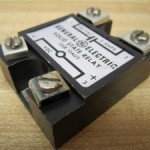
A solid state relay is a device that controls voltage to allow or prevent a voltage or current from passing through a circuit without using any moving parts. Solid state relays are commonly found in control systems that use large amounts of power and must be switched on and off on a regular basis. Solid state relays can be used for a wide variety of purposes and can be constructed in different ways. How a Solid State Relay Works Solid state relays consist of a control switch that produces an Read More
SMB Connector
Sometimes referred to as a sub-miniature connector, the SMB Connector is one member of the family of radio frequency (RF) connectors developed during the decade of the 1960’s. As is true of all RF connectors, the SMB connector is manufactured to work within a wide band of frequencies. What does the SMB Connector do? Designed to work with coaxial cables, the SMB connector acts as an interface between the cable and the electronic device. One of the main advantages of this type of connector is that it does not require Read More
Zener Diode
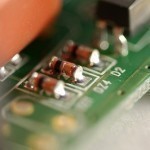
A Zener diode transfers current forward and backward, while traditional diodes are only capable of transferring current forward. Many different electronic systems use Zener diodes to control their circuit’s voltage levels. While there are several ways of doing this, Zener diodes provide efficient voltage regulation without damaging the diode itself. How Zener Diodes Work For the most part, a Zener diode acts like a regular diode as current moves in a forward direction in its circuit. However, when a large enough voltage is applied to the diode in the reverse Read More
Photodetectors
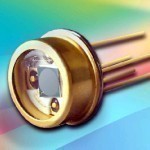
A photodetector is a device that imprints the image of an object or scene onto a material. Photodetectors are made in various ways and can be used for different purposes. Most photodetectors fall into the phototube, thermal detector, or camera category. These photodetectors are used for communication, navigation, and record keeping. Types of Photodetectors Phototube A phototube is a device that contains a chamber and is either filled with gas or vacuumed so that light passes through it. Phototubes are extremely sensitive and detect ultraviolet, visible, and infrared light. They Read More
Capacitor
In a very simple sense, a capacitor is a device that stores energy in an electric field between two charged "plates" for a short period of time. The electric charge is then used or dissipated at an appropriate time. The capacitor essentially works along the same lines as the battery you might find in a flashlight, but with a few minor differences. How a Capacitor Works A capacitor works in a fairly simple fashion. There are two "plates" separated by a material called a dielectric. The dielectric can be made Read More
7/16 DIN Connector
The name “7/16 DIN connector” comes from the size of the inner and outer contacts in metric measurements. The inner contact on the 7/16 DIN connector measures 7mm while the outer contact on the connector measures 16 mm. Designed for communications systems, the 7/16 DIN connector can work with equipment with as much as 100 watts of power per channel. 7/16 DIN connectors are used in a variety of applications around the world. Some of these applications include: antennas, base stations, satellite communications, and other high power communications applications. There Read More
Yagi Antenna
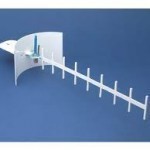
Yagi Antennas are one of the most well-known directional antennas in use throughout the world and are used for communications in the medium range of three to five miles between two points. They can also be used as a bridge antenna to connect clients to an access point. The original inventors of the antenna design were Japanese inventors by the last names of Uda and Yagai who came up with the original design in the 1900s. Yagi antennas remain in widespread use today and are also known as beam antennas Read More
Pirate Radio
Pirate radio is broadcasting outside of the rules laid down by the Federal Communications Commission (FCC). Pirate radio usually occurs on the FM band because that is where the most receivers are. Under Part 15 of the FCC rules, you can legally broadcast on the FM band if you broadcast using less that 100 milliwatts of output power and and antenna less than 3' long. In contrast, commercial FM broadcasters are required to broadcast using at least 100 watts of output power. 100 milliwatts will give your signal an effective Read More
Ka Band
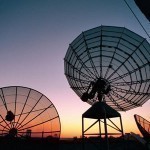
The Ka band uplink uses frequencies between 27.5GHz and 31Ghz and the downlink uses frequencies between 18.3 and 18.8Ghz and between 19.7 and 20.2Ghz. The Ka band is branch of the K band from the electromagnetic spectrum. The term “Ka-band” is from Kurz-above, which originates from the German phrase “kurz” implying short. Ka band dishes can be much smaller than C band dishes. Ka band dishes vary from 2′ to 5′ in diameter. Ka band satellites typically transmit with much more power than C band satellites. The higher frequencies of Read More


Share on: